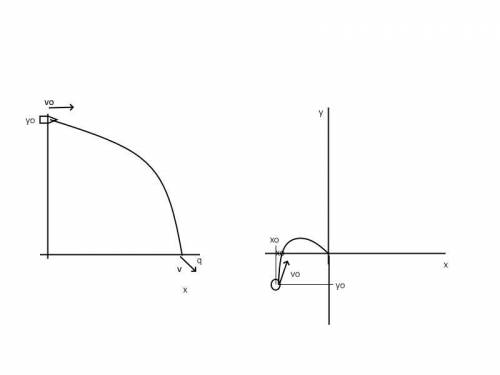
Physics, 08.03.2021 19:30 anthonylemus36
Scenario
You have recently joined the team at A&L, an engineering firm with a broad portfolio. A&L has recently been hired to help plan a supply drop following a natural disaster. Due to conditions on the ground, the supply drop will be done from the air. Your supervisor has asked you to use that information, as well as your knowledge of kinematics, to create a supply drop plan detailing how far the payload should be from the drop site when it is delivered. Additionally, due to adverse conditions in the area, your supervisor has asked you to prepare for two contingencies.
Directions
The plane carrying the supplies will be cruising at a constant velocity of 250 miles per hour relative to the ground and at a height of 2,650 meters above the target site. Using this information, create a supply drop plan including all required information and calculations outlined below. As you are completing your supply drop plan, remember that correct SI units are a required component of your calculations and descriptions.
Construct a diagram that describes the horizontal and vertical motion of the payload. Your diagram should visually represent the initial velocity and height of the payload as it approaches the drop site. To create the diagrams, you may use drawing tools, or you may photograph or screenshot a drawing of your own. This diagram should include the following elements:
The initial velocity of the payload
The initial height of the payload
Horizontal distance to the drop site
Using your understanding of kinematic equations and the given variables in the scenario, calculate the horizontal and vertical motion of the payload to ensure it arrives at the drop site. In your calculations, account for both the horizontal and vertical motion of the payload. Your calculations should address the following:
Initial velocity of the payload when launched
The velocity of the payload when it hits the ground
Following your calculations, describe the equations used in calculating the vertical and horizontal motion of an object. In your descriptions, address the following:
What is the relationship between vertical and horizontal motion in kinematics equations?
How did you analyze the vertical motion of the payload in your solution?
How did you analyze the horizontal motion of the payload in your solution?
What other kinematics principles did you consider in analyzing the motion of the payload?
Following your initial calculations, your supervisor has asked you to consider two additional scenarios. For both scenarios listed below, adapt your diagrams and descriptions to respond to changing variables. Create a diagram describing the horizontal and vertical motion of the payload in order to reach the drop site, and then use your understanding of kinematic equations to describe how these changes would affect calculations for the payload. The two additional scenarios are described below:
In order to prepare pilots for changes in condition, you have been asked to model supply drops by a plane flying into a headwind. For this scenario, you will choose your own location. Use a resource such as the National Weather Service to select a location. Be sure to name the location and use the wind speed in the area to determine the headwind for the plane. For this scenario, consider the plane’s speed and the height above the drop site to be the same as the first scenario: a speed of 250 miles per hour relative to the ground and at a height of 2,650 meters above the target site.
Due to historical difficulty in delivering supplies by plane, one of your colleagues has suggested you develop a catapult for slinging supplies to affected areas, similar to the electromagnetic lift catapults used to launch planes from aircraft carriers. This catapult is located at a fixed point 400 meters away and 50 meters below the target site. The catapult is capable of launching the payload at 67 meters per second and an initial launch angle of 50 degrees. Using your knowledge of kinematics equations, determine whether this would be sufficient to deliver the payload to the drop site.
Once you have completed your adjusted diagrams and equations, describe the effects of changing variables on kinematic equations. These descriptions should reflect the different motions and considerations made for the modifications you considered in the previous step. In your descriptions, be sure to address the following:
How did the changing variables affect the vertical and horizontal motion of the payload?
What adjustments to delivery would need to be made to account for these changing variables?
Supply Drop Plan
Your supply drop plan should include three diagrams depicting the vertical and horizontal motion of an object. Additionally, you should describe the equations used in your calculations and provide a written summary of the object’s motion in each scenario

Answers: 3
Another question on Physics

Physics, 21.06.2019 22:30
During takeoff, the sound intensity level of a jet engine is 170db at a distance of 34 m. what's the sound intensity level at a distance of 1.0 km?
Answers: 2

Physics, 22.06.2019 08:00
Ms.hidalgo opens the door to her classroom. her classroom is 60 degrees and the air outside is 80. predict what will happen using your knowledge of how heat flows.
Answers: 2

Physics, 22.06.2019 12:00
Selma made a diagram to compare convection and radiation. which label belongs in the area marked x? must involve temperature differences between substances or objects only occurs when molecules are in direct contact involves the movement of fluids based on density differences can occur where there is little or no matter
Answers: 1

You know the right answer?
Scenario
You have recently joined the team at A&L, an engineering firm with a broad portfolio....
Questions

Physics, 12.12.2020 17:00

Biology, 12.12.2020 17:00


Chemistry, 12.12.2020 17:00


Chemistry, 12.12.2020 17:00



Mathematics, 12.12.2020 17:00

Mathematics, 12.12.2020 17:00

Mathematics, 12.12.2020 17:00


English, 12.12.2020 17:00



Mathematics, 12.12.2020 17:00

Mathematics, 12.12.2020 17:00

Chemistry, 12.12.2020 17:00


Mathematics, 12.12.2020 17:00



 ) t – 4,9 t²
) t – 4,9 t²
 ] / 2
] / 2



